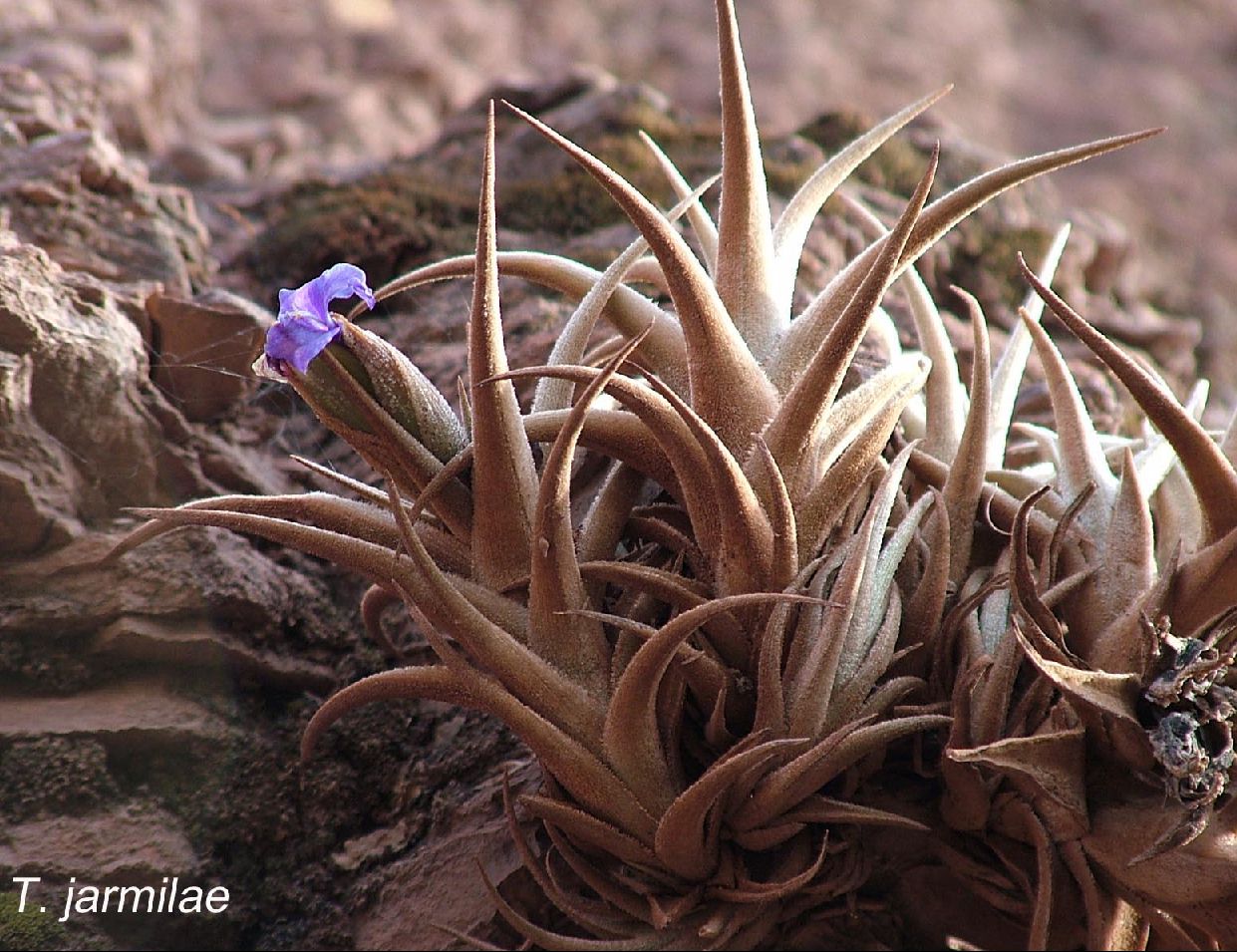
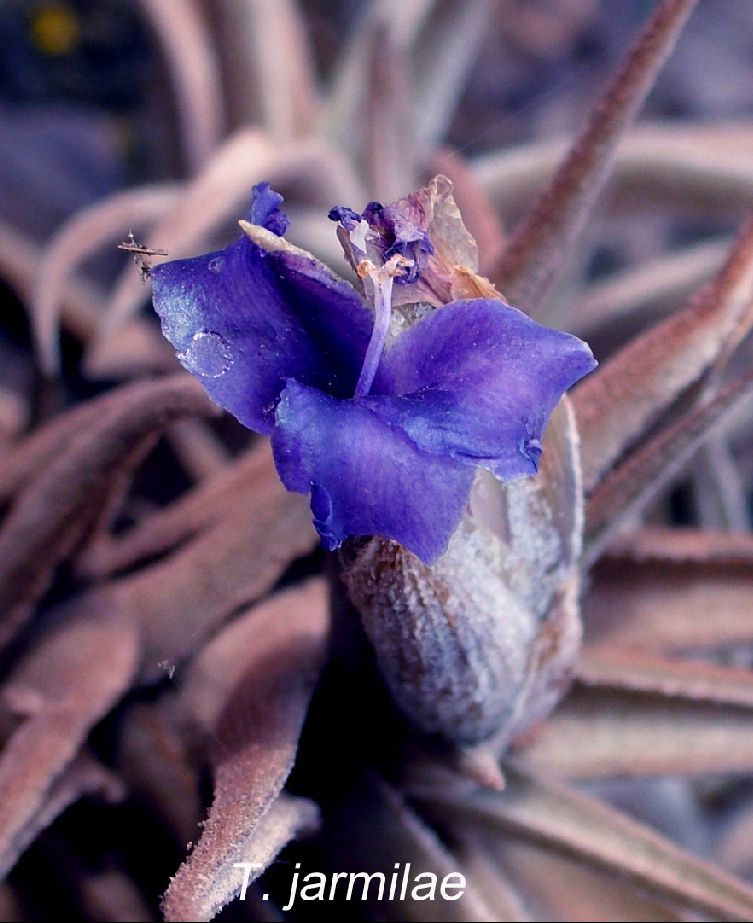
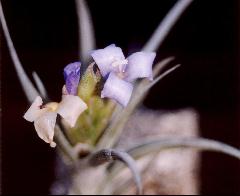
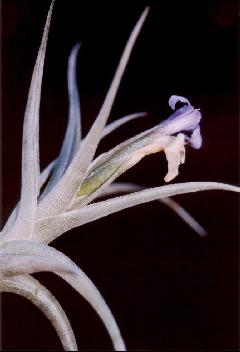
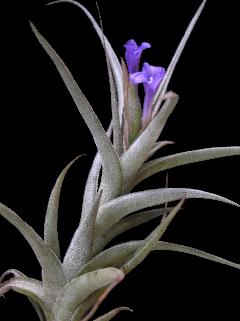
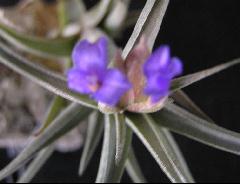
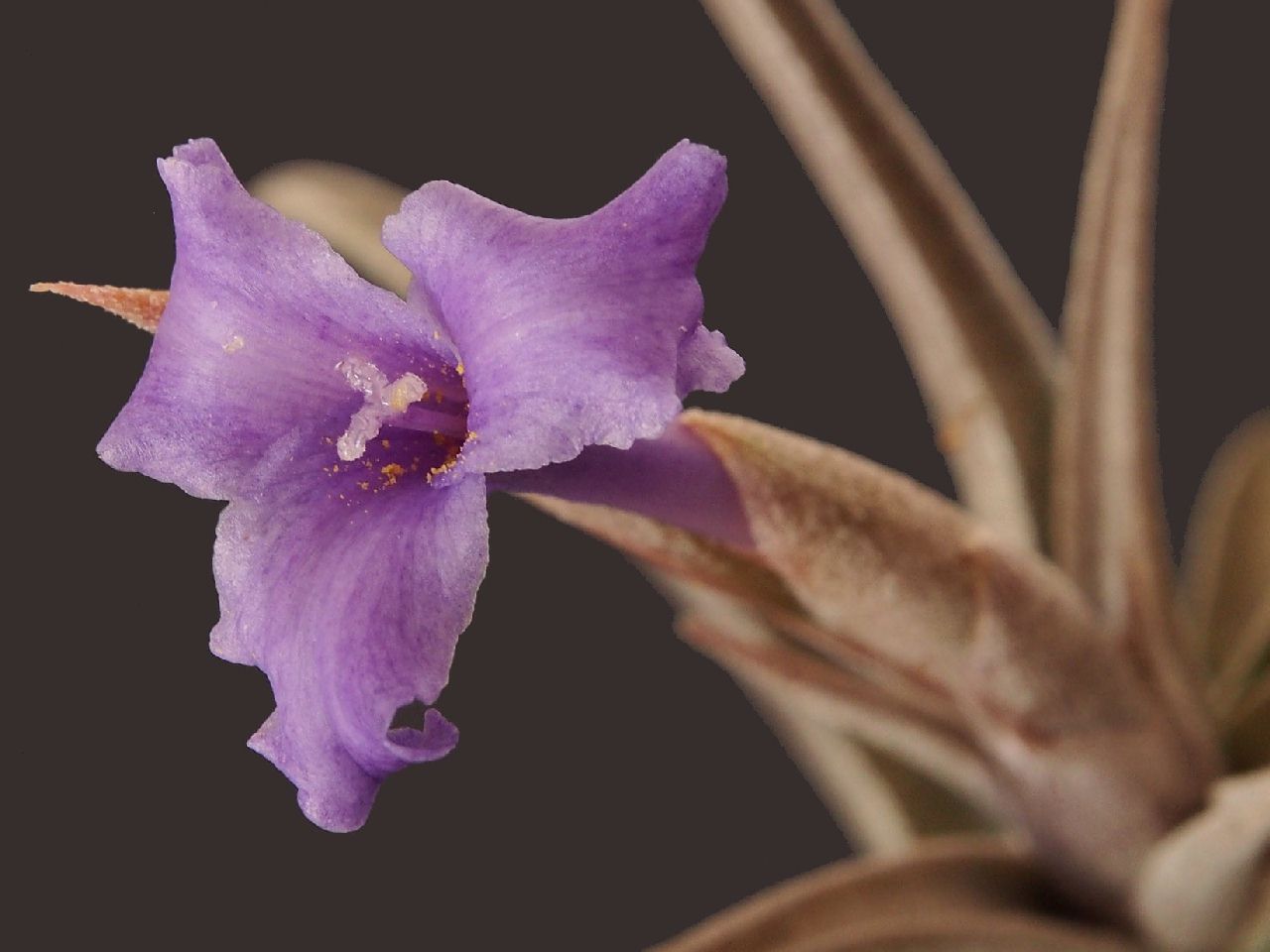
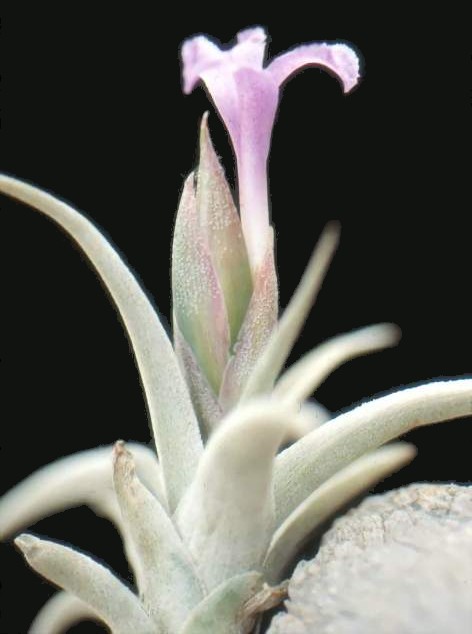
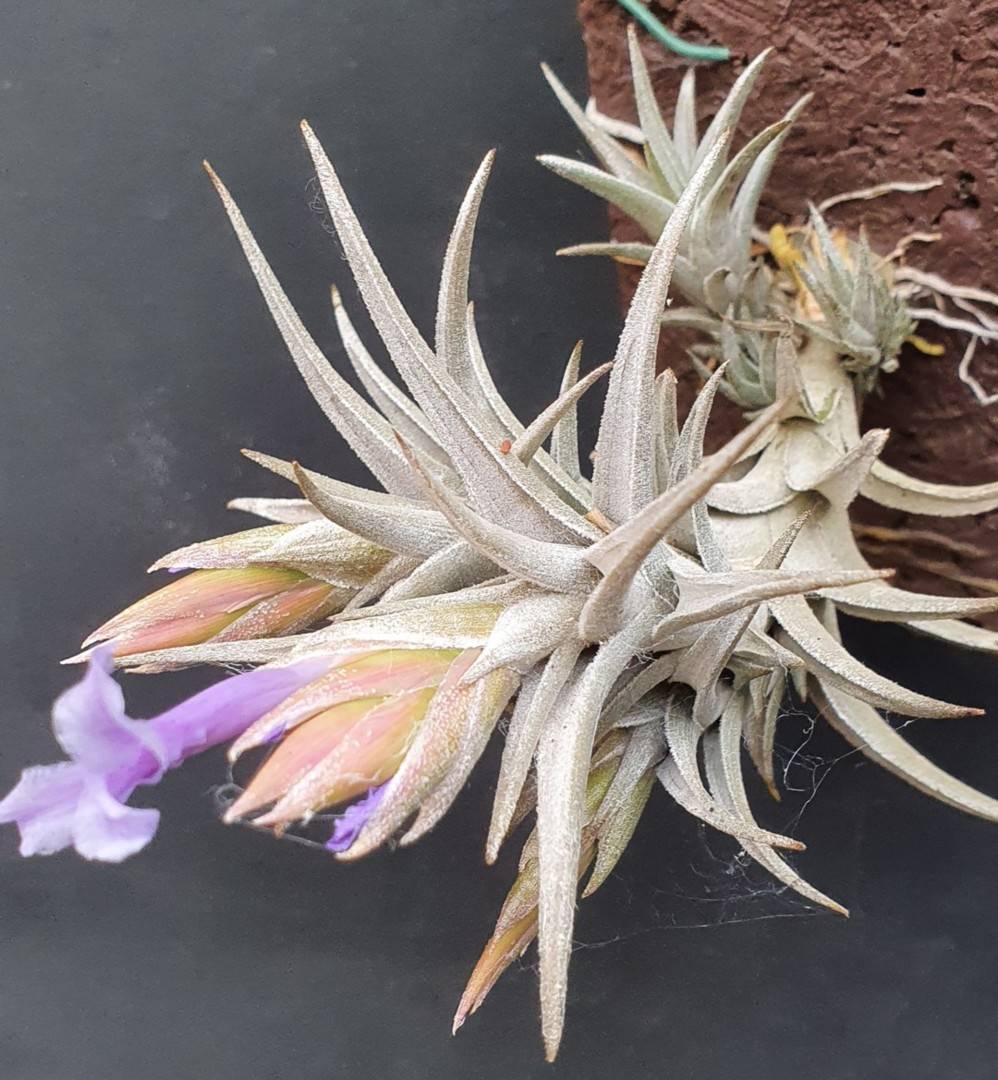
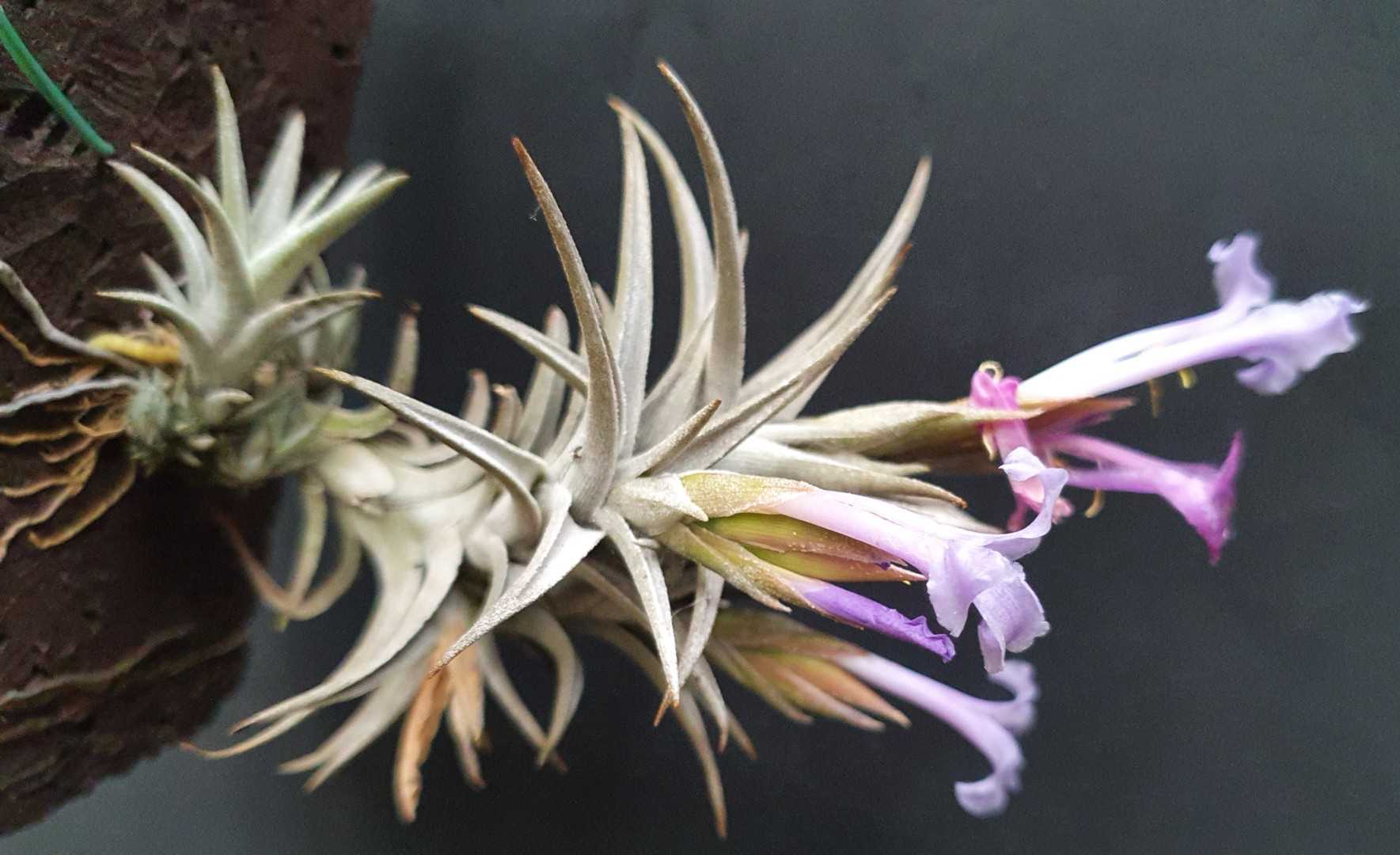
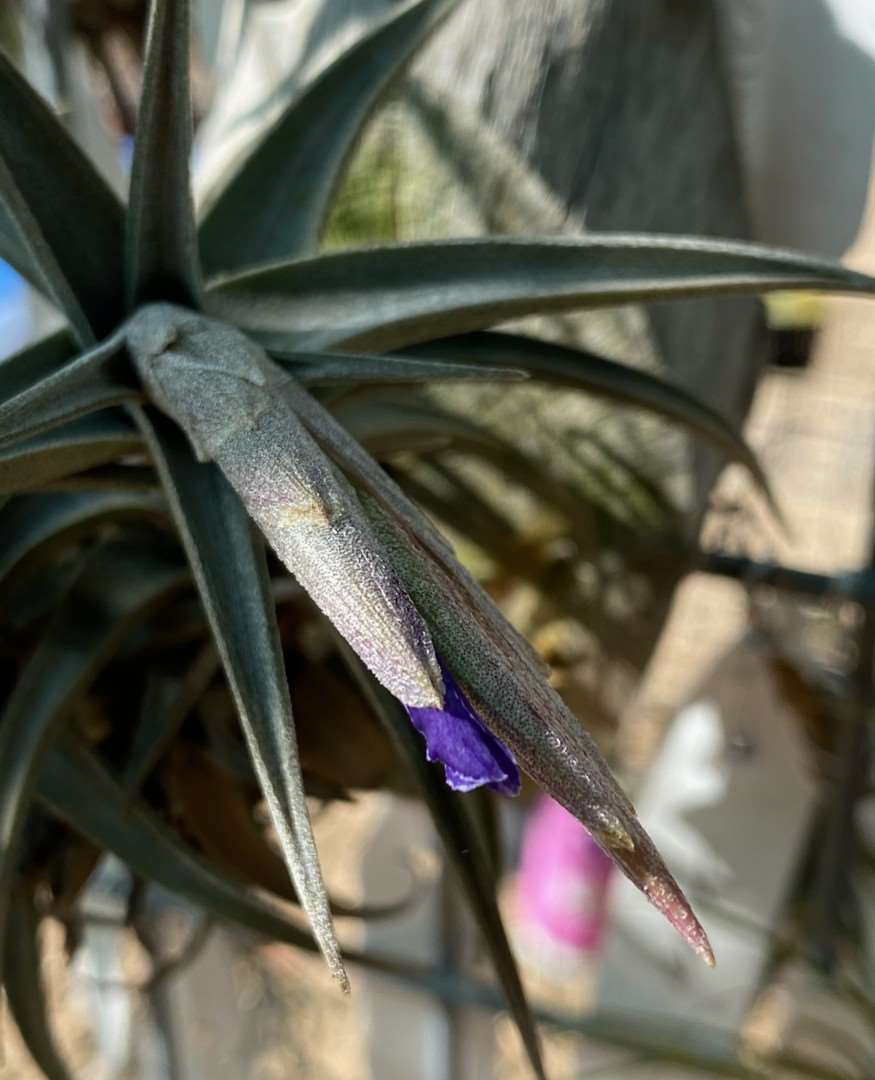
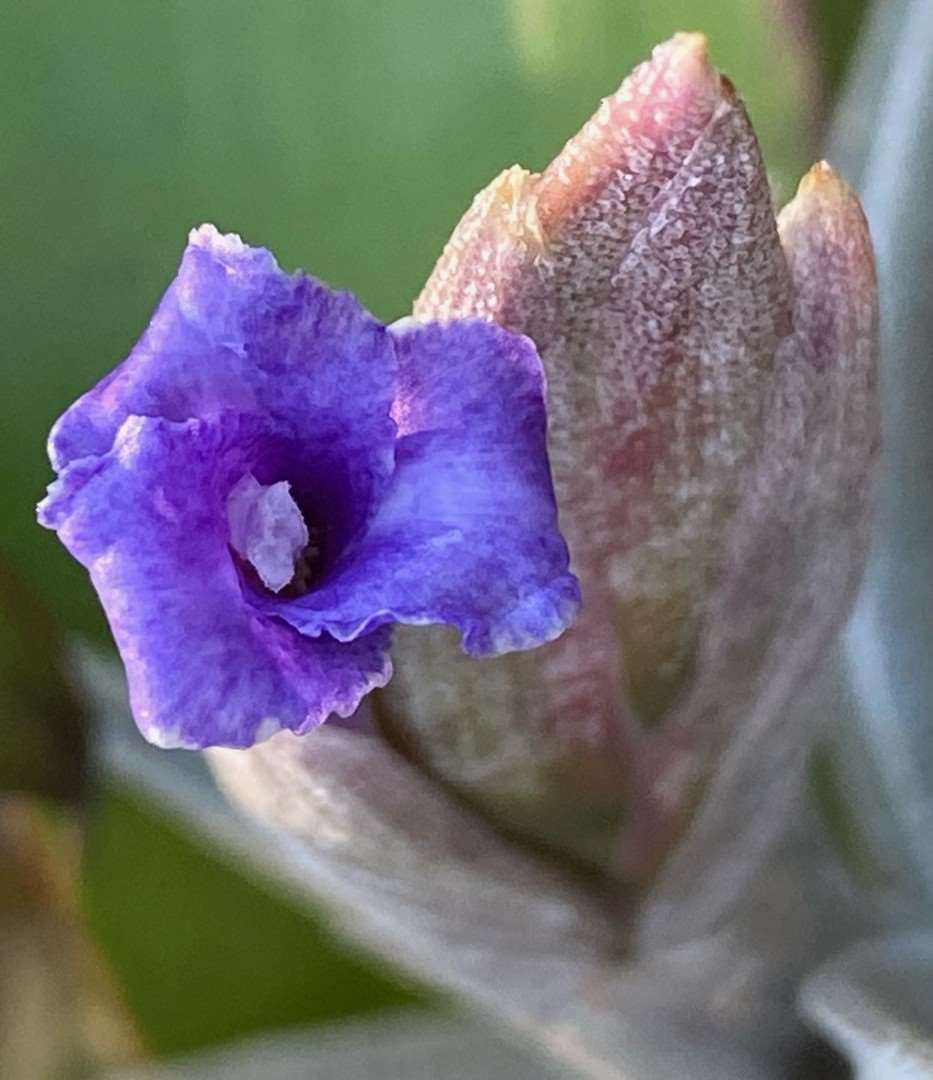
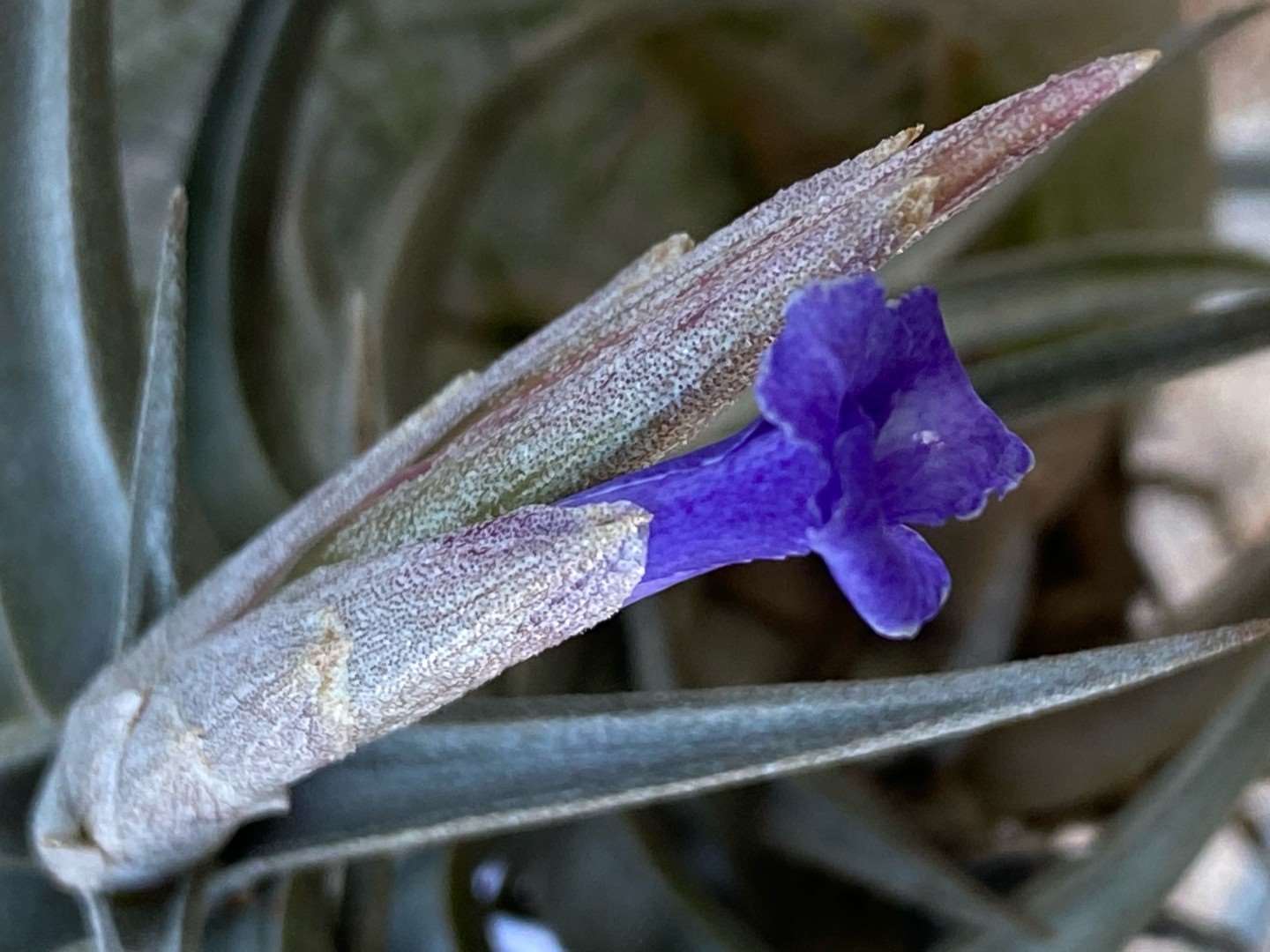
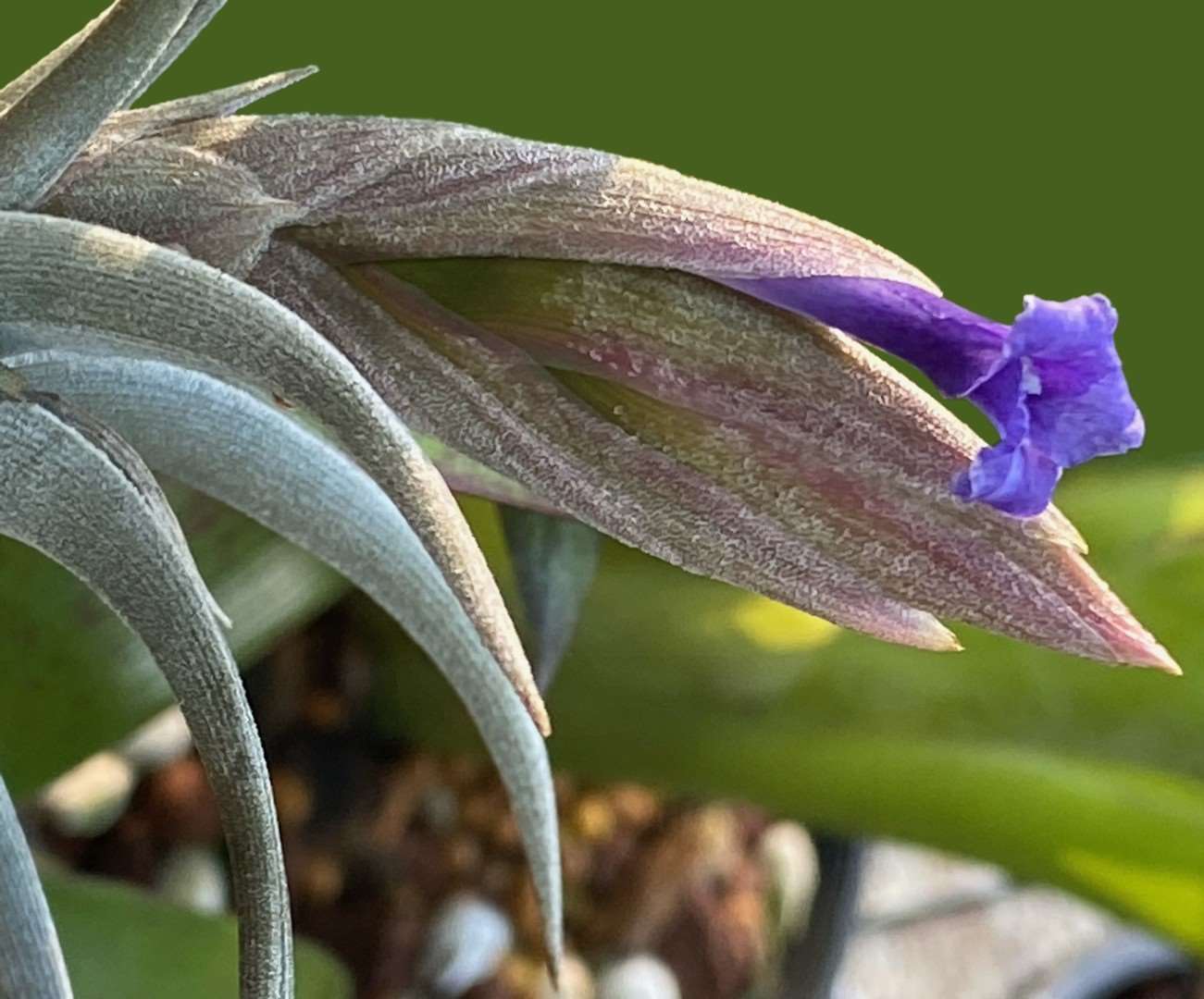
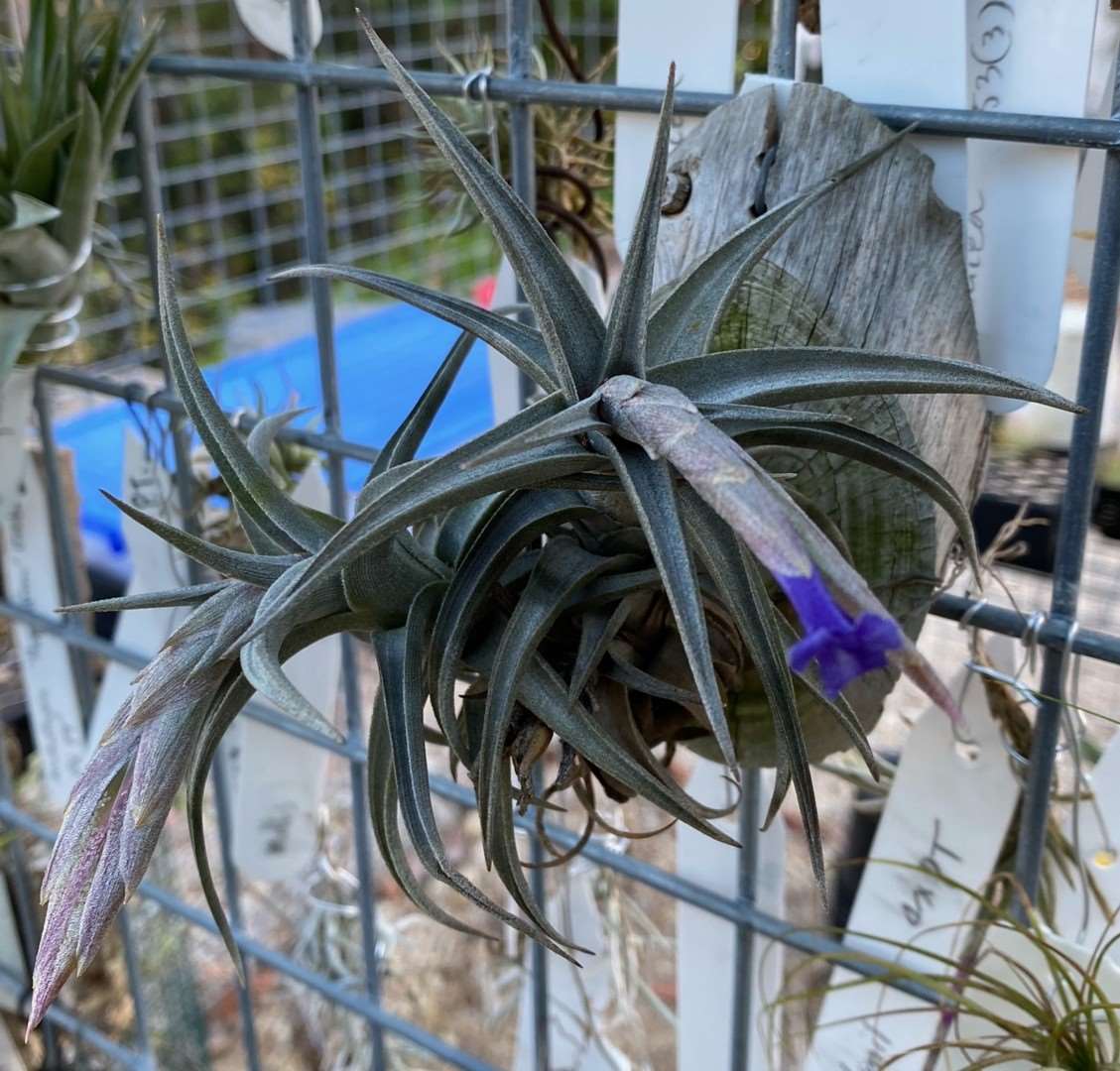
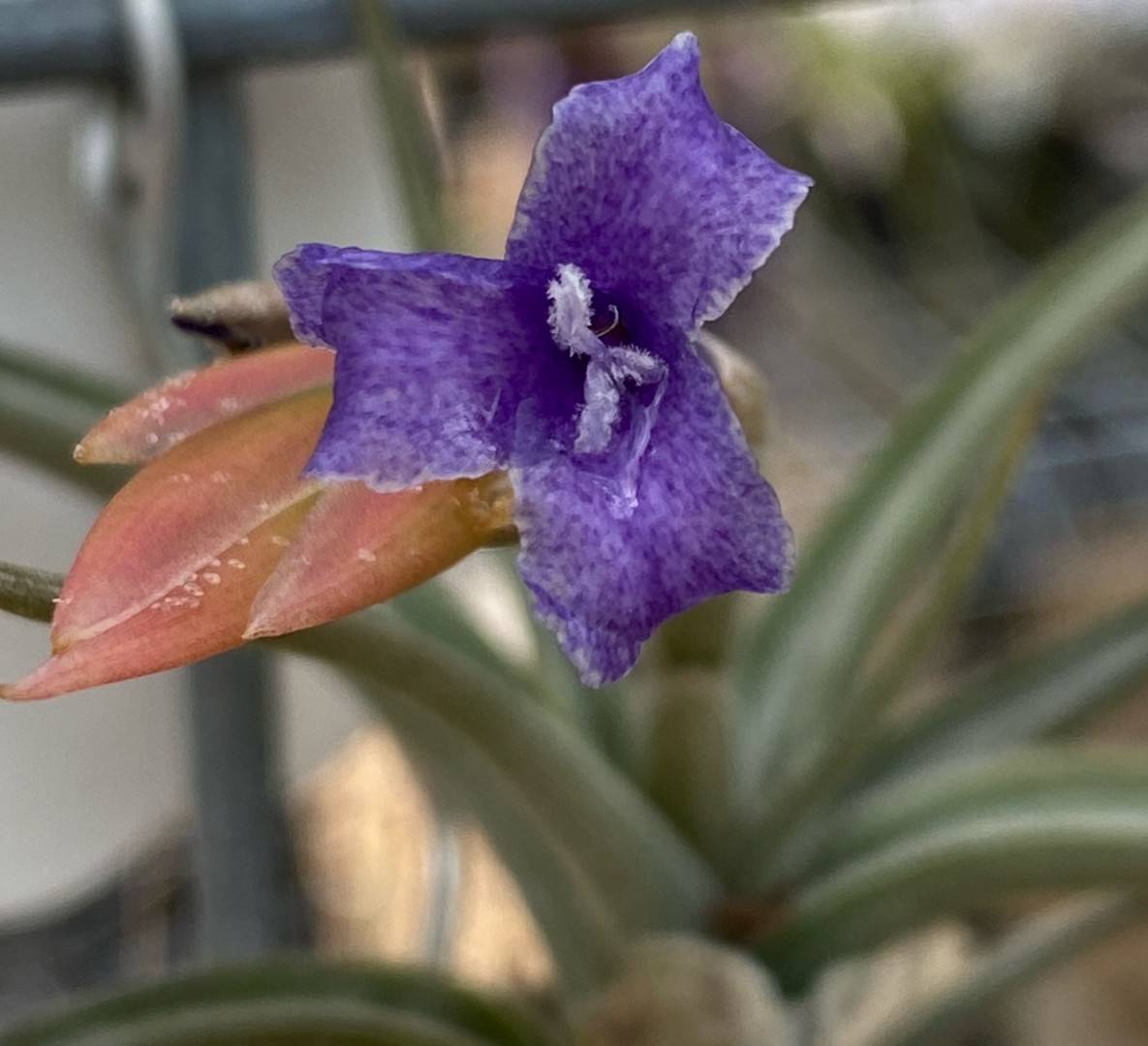
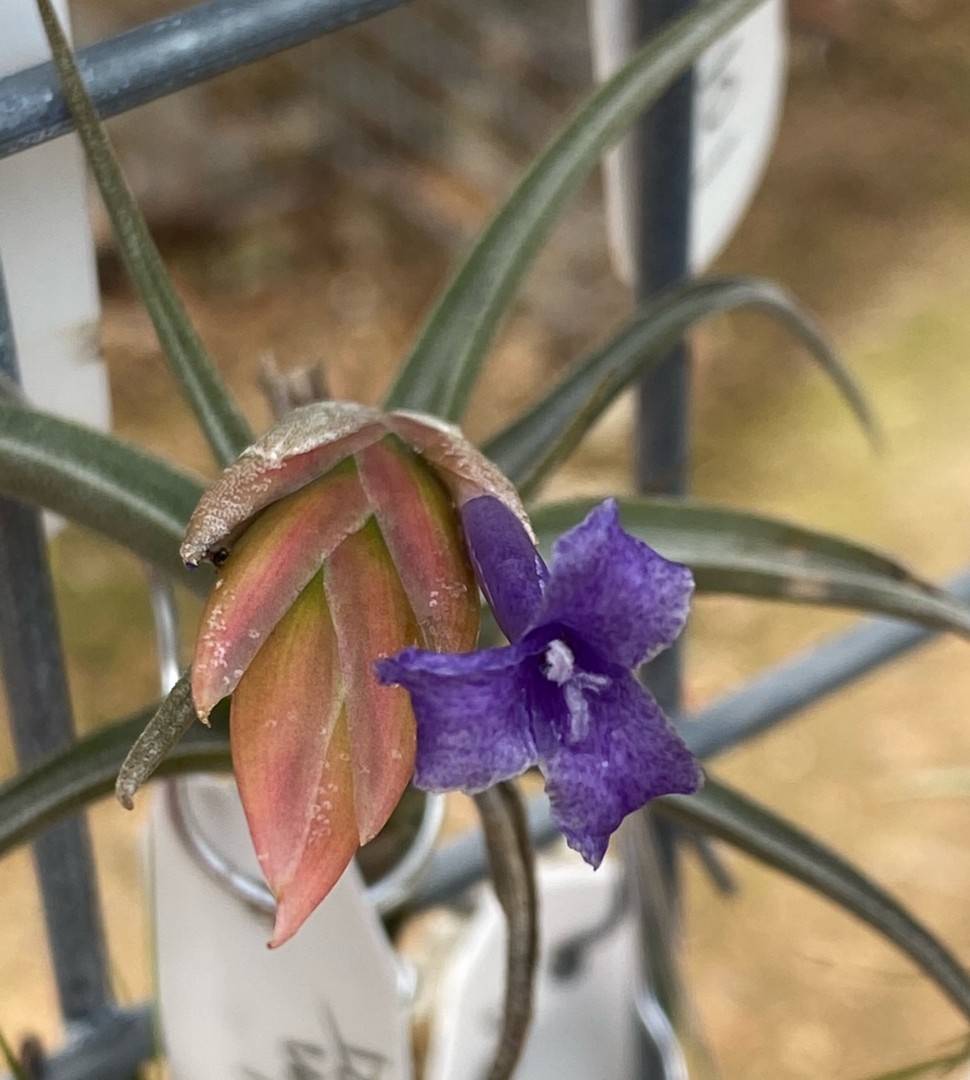
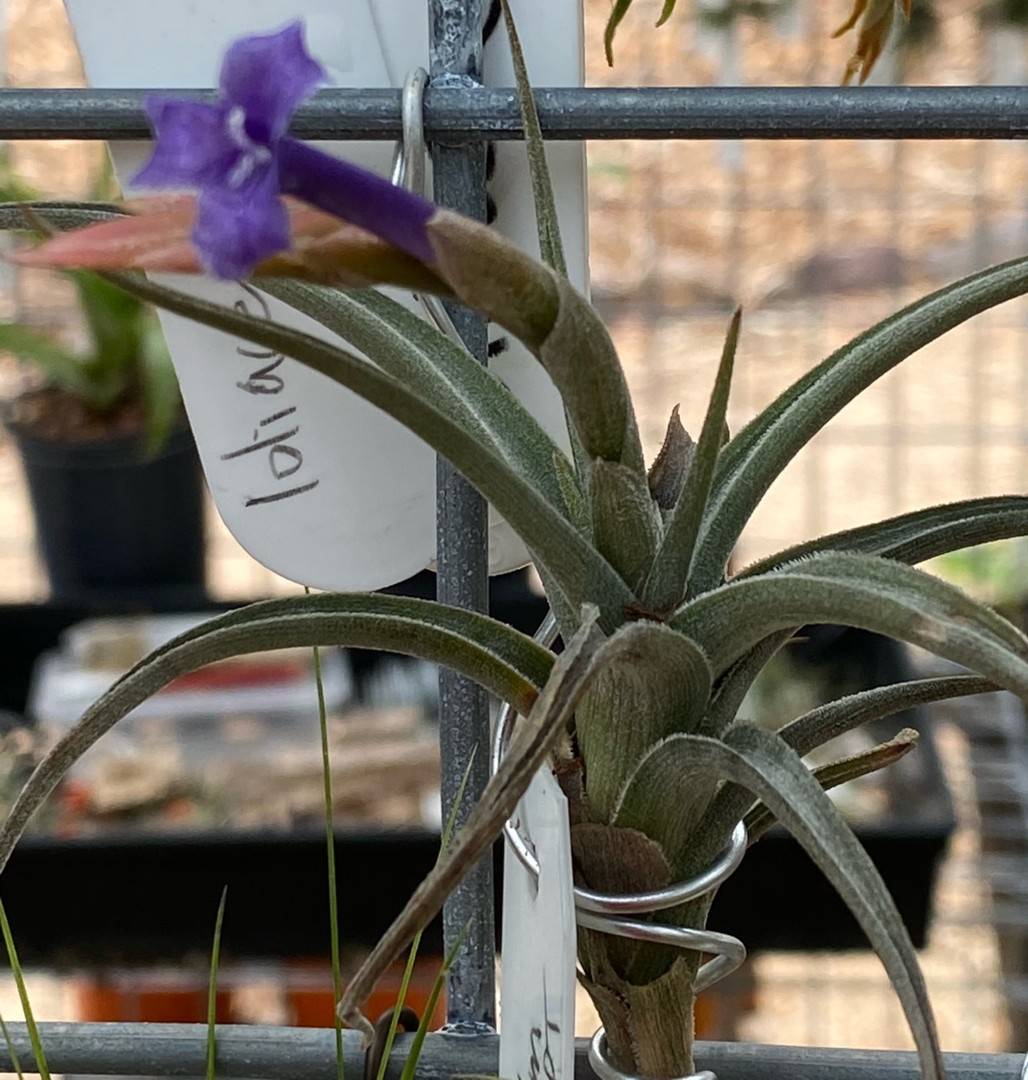
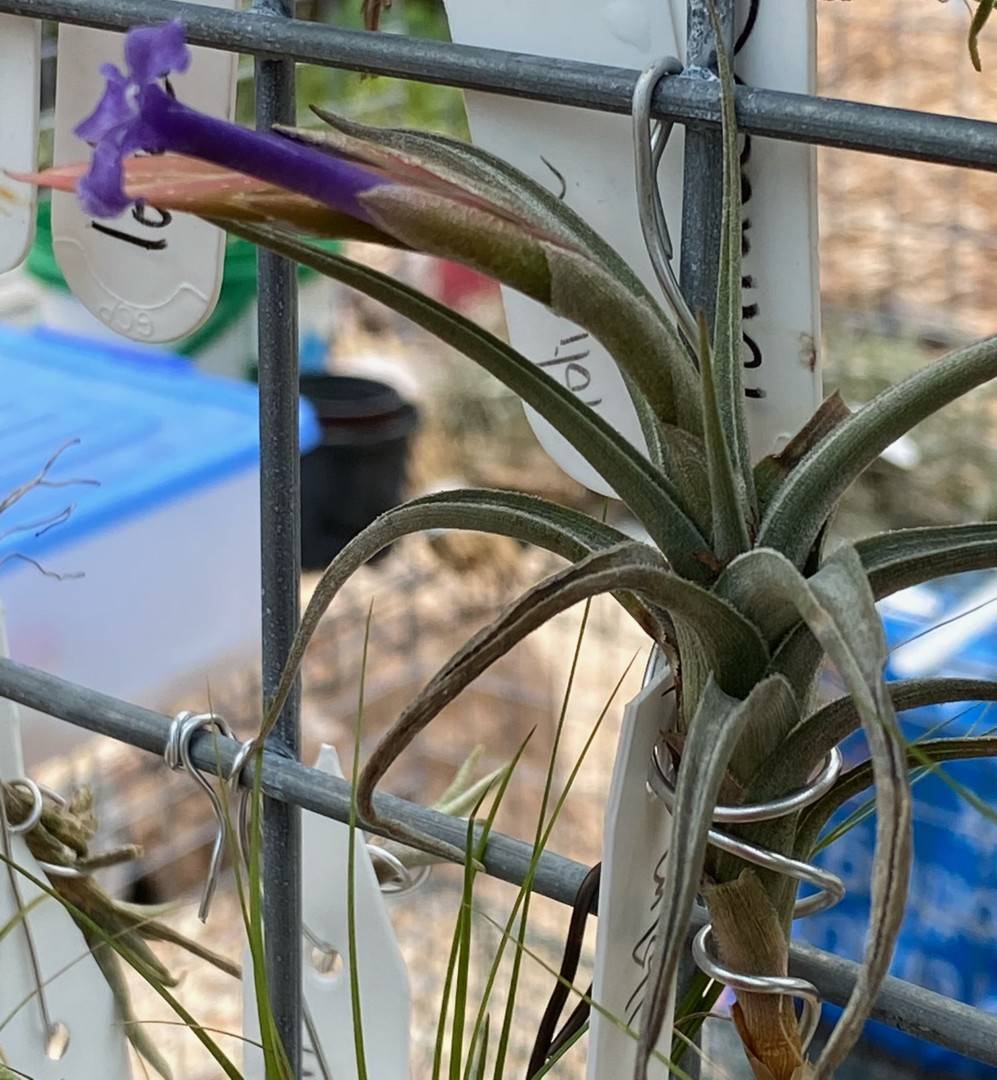
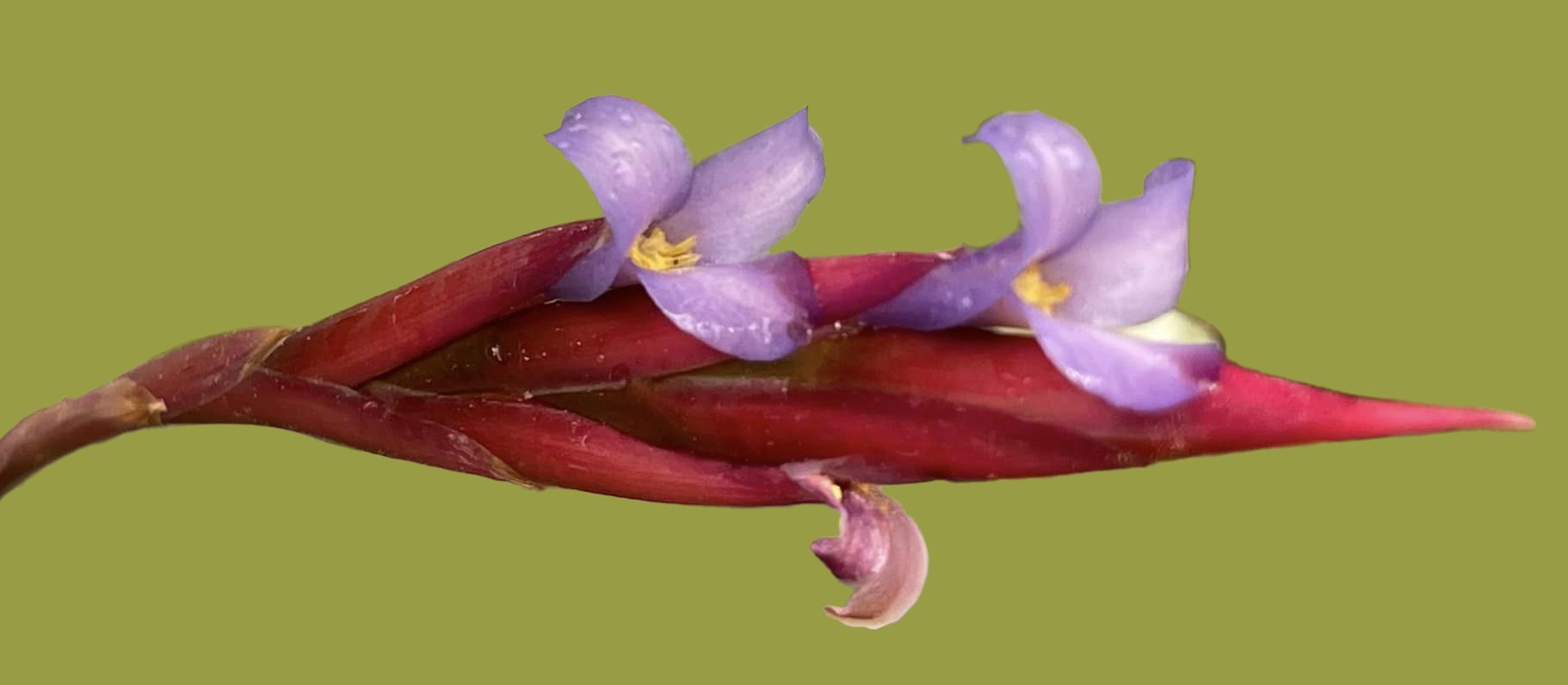
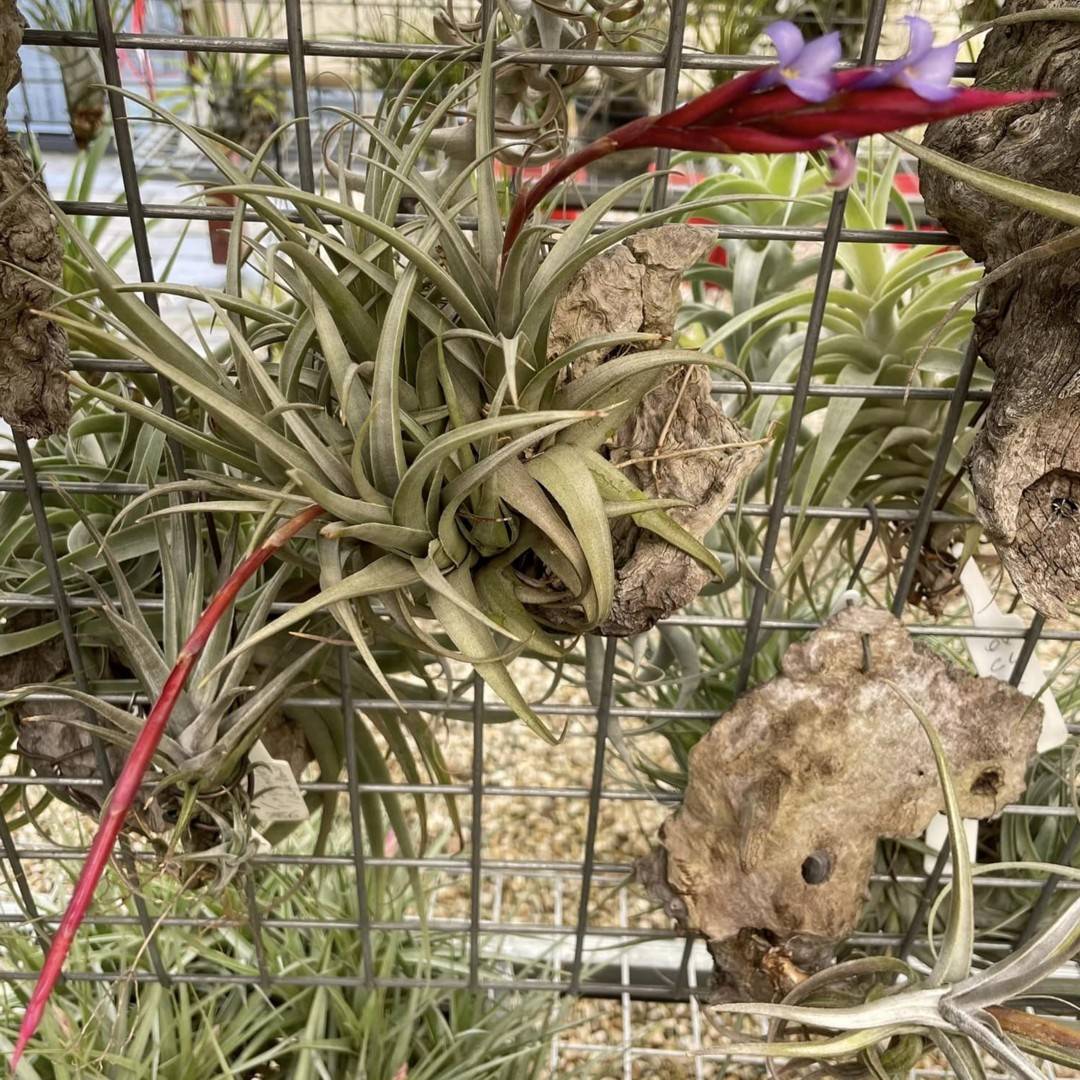
Planta caespitosa, radicibus ramosis, saxicola, breviter caulescens, florens usque ad 15 cm alta; caulis saepe rosulam longior; rosula erecta, usque ad 10 cm alta et 13 cm lata. Folia dense polysticha, pro parte plusminusve secunda, virido-brunnea, utrimque squamis divaricatis centro virido-brunneis dense obtecta, subtus leviter nervata, subca-rinosa, margine fimbriata. Vaginae foliorum a laminis paulo separatae, usque ad 30 mm longae et 11 mm latae, erectae, imbricatae, amplexicaules. Laminae foliorum usque ad 7 cm longae, anguste triangulares, canaliculatae, subulatae, acuminatae, erectopatentes. Scapus brevissimus, usque ad 15 mm longus. Bracteae scapi dense imbricatae, subfoliaceae, superiores bracteis florigeris similes. Inflorescentia simplex, foliis brevior vel iis aequans, 3 - 9 flora, lanceolata, 30 - 60 mm longa, 10 - 20 mm lata; rhachis ad anthesem invisibilis. Flores dense distiche dispositi, sessiles, erecti, usque ad 50 mm longi, fragrantes. Bracteae florigerae sepalis longiores, ovales, acuminatae, leviter carinatae, nervatae, coriaceae, dense pruinosae, rubrae colore vini, usque ad 28 mm longae et 10 mm latae, sepala celantes. Sepals membranacea, pallide rosacea, ad basem vires¬centia, sublibera, glabra, lanceolata, usque ad 20 mm longa et 6 mm lata, posteriora anteriorem 1 mm longiora et carinata. Petals atro-caerulea, ± 35 mm longa, base (circa 10 mm) alba et usque ad 3 mm lata, erecta, tubum formantia sed apice patentia vel recurvata, laminae petalorum spathulatae, 5 mm latae, margine minute undulatae. Stamina in fauce corollae inclusa; filaments erecta, non plicata, usque ad 16 mm longa, linearia, alba; antherae basifixae, 7 mm longae, luteae, basem versus dilatatae. Ovarium ovatum, 4 mm altum et 2 mm latum, alboviride; stylus gracilis, albus infimi 10 mm brunnei, 26 mm longus, cum stigmatibus antheris multo longior; stigma 2 mm longa, alba, lobis papillosis. Fructus et semina ignota.
Typus: Bolivia, Depto. Cochabamba, prope Capinota, 2560 m s. m., 10.10.1986, leg. E. Haugg 7163 (Holotypus WU).
Patria: Bolivia, Depto. Cochabamba, apud Tarata et Capinota, 2560 - 2600 m s.m.-Saxiculosa.
PLANT- Caespitose, with strong spreading roots, short stem, flowering to 15cm high, stem much longer than the rosette. Rosette erect to 10cm high and 13cm wide.
LEAF - Densely polystichous, green, both sides with dense green¬brown appressed scales, underneath nerved, the edges fimbriate, becoming plump to l0cm long.
LEAF SHEATH - Indistinct, to 3cm long, 1.lcm wide, erect.
LEAF BLADE - To 7cm long, thin triangular, grooved, awl-like acuminate, erect, the tips recurved.
SCAPE - Very short, from almost missing to l.5cm long, with dense imbricate stem bracts, subfoliate, the upper ones similar to the flower bracts.
INFLORESCENCE - Simple, densely distichous, shorter or as long as the leaves, lance-like sword shaped, strongly complanate, 3-6cm long, l-2cm wide, 3-9 flowered, rhachis not visible,
FLOWER sessile, erect, to 5cm long, scented.
FLOWER BRACT - Longer than the sepals, oval, short tipped, weakly keeled, nerved, leathery, dense sub-pruinose scaled, wine red, to 2.8cm long, lcm wide, sepals hidden.
SEPALS - Thin membranous, pink, at the base green, the back pair 1mm longer and keeled, part free (joined for lmm), not scaled, when in dry condition nerved, lance-like to 2cm long, to 0.6cm wide.
PETAL - 3.5cm long, dark blue, at the base white for lcm and 2-3mm wide, blade 5mm wide, linear tube, blade spatulate, the edges very finely waved, the tip recurved.
STAMEN - Enclosed in flower, Style substantially longer than the stamens, filament to l.6cm long, thin, white, not pleated, anther to 7mm long fixed at base, the bottom broader, the tip thin tapering, yellow.
STYLE thin, white, at the base lcm brown, 2.6cm long. stigma lobes 2mm white, erect, papilose.
OVARY - Almost egg shaped, 4mm long, 2mm wide, white-greenish.
HABITAT - Cochabamba, BOLIVIA, between Tarata and Capinota, 2560-2600m, growing on rocks.
Differs from T. boliviensis in
1 - Lightly carinate floral bracts.
2- Dark blue petals.
3- Fragant flowers.
Notes
In September 1986, our friends Erich Haugg, Ewald Heger and Helmut Alber went on an adventurous trip to Bolivia, from which they brought many interesting cactus and Tillandsia home. I will introduce one of these new Tillandsias, that they found on this trip.
T. gerdae was named after Gerda Haugg, the wife of the discoverer, who is our membership secretary. She is a good Tillandsia grower with a collection worth seeing in Altmuhldorf.
Tillandsia jarmilae
Tillandsia jarmilae J. J. Halda, Acta Mus. Richnov., Sect. Natur. 12(2): 57-68. 2005
DESCRIPTIO: A simili T. gerdae floribus magnis, brevitubulosis, cyaneis, foliis crassis dense ferrugineo lepidotis distinguitur.
Breviter caulescens, usque ad 40mm alta. Folia multa planiuscule rosulata, ad 40mm longa, rigidula, e vagina vix ultra 20mm lata in apicem subfiliformi-acutissimum persensim angustata, utrinque densissime lepidotibus maximis obtecta ferruginosaque. Scapus brevis vel brevissimus, foliis brevior, dense lepidotus, vaginis erectis ovato-lanceolatis, omnibus in laminas longas subfiliformes productis, densissime lepidotis indutus. Inflorescentia subpauciflora, laxiuscule 2-pinnatim paniculata, folia aequans vel paullo superans, e spicis usque ad 3, flores vix ultra 3 laxe dispisitis gerentibus, laxe pinnatis, geniculatis, bracteas primarias superantibus, suberectis, usque ad 30mm longis composita, usque ad 50mm longa et 40mm diam. metiens; axibus densissime lepidoto-ferrugineis; bracteis primariis conspicuis, ellipticis, acutis, dorso dense lepidotis; bracteis florigeris ad 5 mm distantibus, dorso dense lepidotis, quam sepala manifeste longioribus, cum floribus suberectis, ellipticis, acutis, ad 15 mm longis, haud carinatis, sepala involventibus. Flores ad 60 mm longi; sepalis subaliquater liberis, dorso dense lepidotis, subellipticis, late acutis ad 20 mm longis. Petala cyanea, laminis subtrapeziformibus, obtusis, per anthesin optime patentibus. Stamina petalis subduplo breviora, stylum superantia. Capsula brunnea, ca 15 mm longa. Semina brunnea, oblonga, minuta.
HOLOTYPUS HIC DESIGNATUS: PR no.11954; leg. J. J. Ha1da 16.11. 2005; no. JJH/0511315.
PATRIA ET DISTRIBUTIO: Bolivia occidentalis, dept. Oruro; in declivibus petrosis lapidis arenariis in vicinitate urbis Oruro declivium orientalium, ad ca 3000 m s. m.
DESCRIPTION: Differs from similar T. gerdae in having large, shortly tubular bright blue flowers and leaves succulent, densely rusty lepidote.
Densely pulvinate, shortly caulescens, ca 40 mm tall.
Leaves many, rosulate, ca 40 (rarely to 65) mm long, rigid, base widely vaginate (up 20 mm across), apex narrowly angustate, densely rusty-lepidote.
Scape much shorter than basal leaves, leaves ovate-lanceolate, widely vaginate, densely rusty-lepidote.
Inflorescence few flowered (1-3); bracts large, ca 50 mm long and 40 mm across, densely rusty-lepidote.
Flowers to 60 mm long, shortly tubular, bright blue;
petals subtrapeziform, obtuse, more or less patent;
sepals irregularly free, dorsal ones densely lepidote;
stamens included, style much shorter.
Capsule cylindric, brown, ca 15 mm long.
Seed oblong, brownish, minute.
DISTRIBUTION: W Bolivia, dept. Oruro, on red sandstone walls E of town Oruro, ca 3000 m.
Opinion from the Germans and Austrians is that it is within the description of T. gerdae.
Treated thus in Binomials 11, 2008
Tillandsia gerdae aff. from Capinota desc by R Ehlers - Not yet published
Hase #24, EB952604
Plant in large groups, growing on rocks with robust branched roots, forming a 15-45cm long stem, 10-12cm diam, hanging, the top of the bent ascendins stem laxly polystichous covered by the leaves, the blades almost spreading horizontally.
Leaves 5-8cm long, thick leathery, grey, both sides dense grey, almost pruinose lepidote, outside nerved, the edges with large grey asymmetric trichomes
Sheath 2-3cm long, 8-12mm wide, oval triangular, indistinct from the blade, erect, enclosing the stem, from the glabrous base, dense grey lepidote
Blade very narrow triangular, subulate attenuate, tapering to an awl-like tip, channelled, the edges strongly bent inwards, bent outwards or recurved
Scape almost missing, very short & stout, strongly angled, 5-10mm long, wholely hidden in the leaf rosette
Scape bracts a few densely imbricately covering the scape, grey lepidote, 1-3cm long, the bottom ones similar to the inner rosette leaves, the upper ones acute and similar to the floral bracts.
Inflorescence terminal, a simple distichous sword shape, hardly or not exceeding the rosette, bent under at an angle of 45° to 60°, 4-6cm long, 1.2-1.6cm wide, elliptic acuminate, strongly complanate, with sessile scented flowers and 1-2 sterile bracts at the base.
Rhachis almost straight, green, 4 angled, glabrous
Flower bracts imbricate, rhachis not visible at anthesis, 3-3.7cm long, 1.2-1.4cm wide at base, almost twice as long as the sepals, oval, acute, leathery with membraneous edge, the bottom ones not keeled but the top ones keeled towards the tip and double keeled at the base, inside nerved, glabrous, outside greenish red, the bottom bracts glabrous for 1cm at the base then dense lepidote, the upper ones with larger glabrous base and the scales weaker.
Sepal 1.8-2.1cm long, 5-6mm wide, narrow elliptic acute, subfree, uniformly joined with the ovary for 2mm, glabrous, thin leathery with hyaline edges, pink with strong thicker green middle, the anterior weakly and the posterior pair strongly wing keeled
Petal 6-6.6cm long, the upper part violet blue (#52 aster violet), the 2cm long platte is 7-8mm wide, elliptic acuminate, with strong wavy edges, narrowing to 4-3mm at the base, the bottom portion 2cm white, the tip strongly bent outwards and twisted under.
Stamen enclosed in the flower, style as long as the flower tube, Stigma visible, Filament 1cm shorter than the style, 3-3.1cm long, narrow ribbon-like, not plicate, white; Anther 5-6mm long, 0.4mm wide, linear acuminate, joined at the base, yellow; Pollen citron yellow.
Style 3.5cm long, 1mm diam. at base, narrowing to the top, white, top portion yellowish; stigma 3mm long, 2.5mm wide, the narrow lobes spreading, papillose, yellowish, (Type I Brown & Gilmartin 1984)
Ovary 8mm high, 2.5mm wide, oval
Type Bolivia, Dept. Cochabambae, near Capinota, 2500m, leg Hase, Heger, Hromradnik & Ehlers 22/3/1995 (Holotype WU)
Differs from T. gerdae in
Plant long caulescent, the leaves not dense, partly very lax with very large internodes on the stem.
Leaves a little stiff, narrower & longer, stronger lepidote and the edges with large asymmetric trichomes, the blades bent under.
Inflorescence not erect, partly 40 –60° bent down
Flower bracts longer and wider, longer than the sepals (almost by a half)
Sepals shorter and smaller, the anterior keeled
Petals almost twice as long, the tips rolled over, edges wavy however not serrated